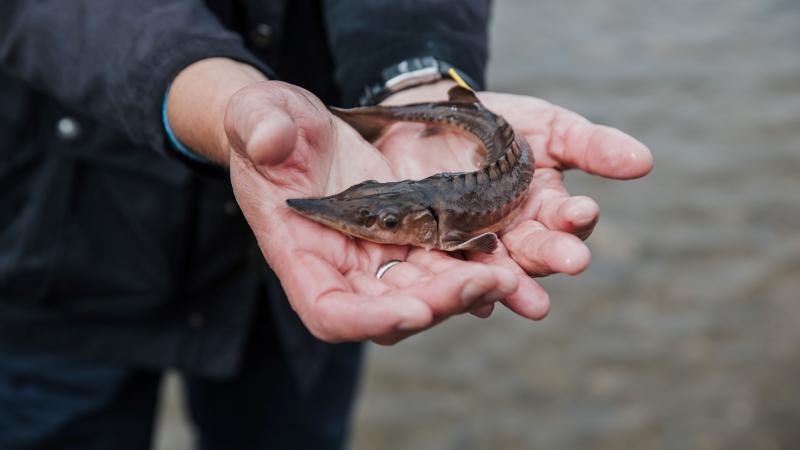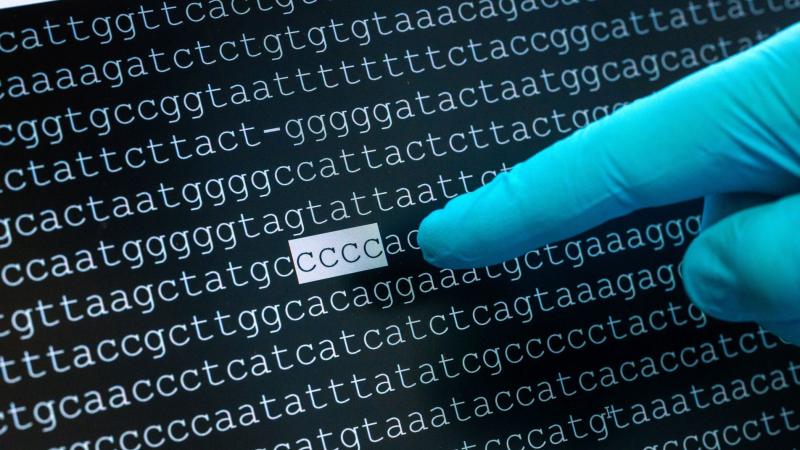You can't see them with the naked eye, and yet bacteria have a significant influence on the nutrient cycles in the water. | Photo: Angelina Tittmann
In particular, the interactions between heterotrophic bacteria and primary producers, such as phytoplankton, influence ecosystem functions and biogeochemical cycles.
Bacteria as a regulating variable for carbon in water bodies
One example illustrates this quite clearly: heterotrophic bacteria consume up to 50 percent of the organic matter released by phytoplankton. How these microbes interact among each other is thus the most important factor influencing the dynamics of dissolved organic carbon in the oceans, affecting the ocean-sink of carbon and, in turn, it’s feedback on the climate.
Interactions so far only studied in individual model systems
The bacteria thus use the organic carbon. In return, the phytoplankton benefits from more nutrients through bacteria-mediated processes, such as the reminalisation of nitrogen and phosphorus, the supply of vitamins and iron absorption through the formation of siderophores. "Most of the interaction mechanisms have so far only been studied in few model systems. That is, by growing individual bacterial species in co-cultures and experimentally assessing if and how they interact. However, little is known about the interaction capabilities of natural bacterial communities," said Hans-Peter Grossart.
Metabolic pathways and genetic traits revealed
To systematically explore the functional and interaction potential of sequenced marine bacteria, the team developed a trait-based approach that translates complex genomic data into a usable set of information. In fact, it seeks for the presence of complete metabolic pathways (e.g. TCA cycle, biosynthesis of vitamins, etc.) and specific gene sets, defining a profile of genetic traits for each give genome. This approach has been applied to 473 complete genomes of various marine bacteria from 248 genera - a significant proportion of the marine microbial communities.
The researchers identified genomic functional clusters that group bacteria with common ecology and life history. Most genomic functional clusters had unique combinations of interaction traits, including the production of siderophores (special molecules that mediate supplying of iron), phytohormones and various B vitamins.
Interactions directly promote metabolism
These can serve metabolic interactions, for example. Bacteria associated with phytoplankton use the organic carbon released by the primary producers. In turn, phytoplankton benefit from more nutrients through bacteria-mediated processes, such as nitrogen and phosphorus remineralisation, vitamin supply and iron scavenging via formation of siderophores.
Many bacteria must obtain their vitamins from others
Vitamins B1, B7 and B12 are essential cofactors for microbes. Some microorganisms, such as phytoplankton, are auxotrophic for these vitamins. Vitamins are present in aquatic ecosystems only in low concentrations and their supply can limit biogeochemical cycles. This means microbes greatly relies on co-occuring bacteria for vitamins supplying. Less than half of all genomes in the researchers' dataset could produce all three B vitamins but almost all of the genomes, 83 percent, coded for transporters for at least one of these vitamins. "This strongly suggest that several bacteria are dependent on being supplied by other bacteria," explained Luca Zoccarato.
Phytohormones from bacteria stimulate growth of phytoplankton
In addition to such metabolic interactions, there can also be direct signal transmission between bacteria and phytoplankton, whereby heterotrophic bacteria directly control the cell cycle of the phytoplankton through phytohormones or damage it via toxins.
Several recent studies have shown that bacteria can influence the growth of phytoplankton through the production of phytohormones, and indeed the auxin hormone indole-3-acetic acid (IAA) has been identified in natural marine samples. A tangible fraction of the analyzed bacterial genomes (3 to 8 percent), showed the capability of producing such hormone via specific pathways (the indole-3-acetonitrile and indole-3-acetamide pathways) meaning that more bacteria than expected could directly affect the growth of phytoplankton .
More interaction mechanisms than expected
"Certain genomic functional clusters, which include alpha- and gammaproteobacteria, showed more interaction features than expected by their genome size and they may be more keen to interact with other bacteria and phytoplankton," said Luca Zoccarato. The researchers identified clusters of linked-traits that may reveal cellular functions that have evolved together - such as secretion systems, regulation of nitrogen metabolism and B vitamin transporters - shedding new light on how the multifaceted microbial interaction may unfold.
The results show that there are complex mechanisms of microbial interactions and that they are widespread among marine organisms. Freshwater bacteria probably also possess these potentials. "This shows once again how much different species in the ecosystem depend on each other - a plea for biodiversity," summed up Hans-Peter Grossart.





